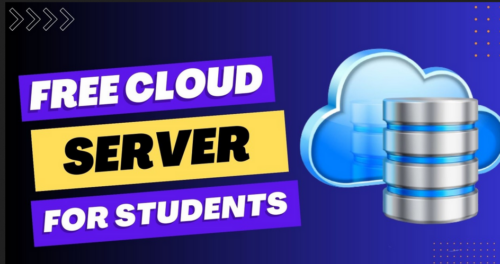free cloud server – In the digital age, having access to a cloud server can significantly enhance your project’s scalability, flexibility, and efficiency. For developers, startups, or tech enthusiasts looking to experiment without financial commitments, free cloud servers present an excellent opportunity.
This comprehensive guide will walk you through the process of obtaining a free cloud server, detailing each step to ensure you can make the most out of this resource.
How to Get a Free Cloud Server: A Step-by-Step Guide
What is a Cloud Server?
A cloud server is a virtual server that runs in a cloud computing environment. Unlike traditional physical servers, cloud servers are scalable, can be quickly deployed, and are accessible over the internet. They are used for hosting websites, applications, and databases, providing a cost-effective and flexible solution for various computing needs.
Benefits of Using a Free Cloud Server
Cost-Efficiency: Ideal for startups and individual developers to test and deploy applications without financial risk.
Scalability: Easily scale resources as your project grows.
Flexibility: Access your server from anywhere with an internet connection.
Learning Opportunity: Great for learning cloud computing and server management.
Step-by-Step Guide to Getting a Free Cloud Server
Step 1: Identify Cloud Providers Offering Free Tiers
Many cloud service providers offer free tiers or trial periods to attract new users. Here are some of the top providers:
Amazon Web Services (AWS): Offers a free tier for 12 months with access to a range of AWS services.
Google Cloud Platform (GCP): Provides a $300 free credit for new users and a free tier for selected services.
Microsoft Azure: Offers $200 free credit for the first 30 days and access to popular services for 12 months.
Oracle Cloud: Provides a free tier with limited resources that don’t expire.
IBM Cloud: Offers a Lite tier with access to several services for free.
Step 2: Sign Up for an Account
Choose a Provider: Visit the website of your chosen cloud provider.
Create an Account: Sign up using your email address. You may need to provide additional details such as name, address, and phone number.
Verify Your Identity: Some providers may require a credit card for verification purposes, even if they won’t charge you.
Step 3: Navigate to the Free Tier Services
Once your account is set up:
Log In: Access your cloud provider’s dashboard.
Locate Free Services: Find the section dedicated to free tier or trial services. This is usually highlighted on the main dashboard or under the billing section.
Step 4: Launch a Virtual Machine (VM)
Choose a VM Type: Select a virtual machine instance that falls under the free tier. For example, AWS offers t2.micro instances.
Configure the Instance: Choose the operating system (Linux, Windows) and configure basic settings like CPU, memory, and storage.
Set Up Security: Configure security groups to allow necessary inbound and outbound traffic. Ensure SSH (for Linux) or RDP (for Windows) is enabled for remote access.
Step 5: Review and Launch
Review Configuration: Double-check your configuration settings.
Launch the Instance: Click the ‘Launch’ button. Your VM will start provisioning, which may take a few minutes.
Step 6: Connect to Your Cloud Server
Obtain Connection Details: Note down the public IP address or DNS name of your instance.
Access the Server:
Linux: Use an SSH client like PuTTY (Windows) or terminal (Mac/Linux) to connect using the command:
ssh username@your_server_ip
Windows: Use Remote Desktop Connection (RDP) with the server’s IP address.
Step 7: Start Using Your Cloud Server
Now that you’re connected:
Install Necessary Software: Install web servers, databases, or any other software your project requires.
Deploy Your Application: Upload your files and start configuring your application.
Tips for Maximizing Free Cloud Server Usage
Monitor Usage: Keep an eye on your usage to avoid exceeding free tier limits.
Optimize Resources: Use lightweight applications and optimize performance to stay within the free tier.
Take Backups: Regularly back up your data to prevent loss in case of instance termination.
Conclusion
Obtaining a free cloud server is a valuable opportunity for developers and businesses to explore cloud computing without initial costs.
By following this step-by-step guide, you can easily set up and start using a free cloud server, paving the way for innovative projects and scalable solutions. Remember to choose the right provider, monitor your usage, and make the most of the resources available to you.
